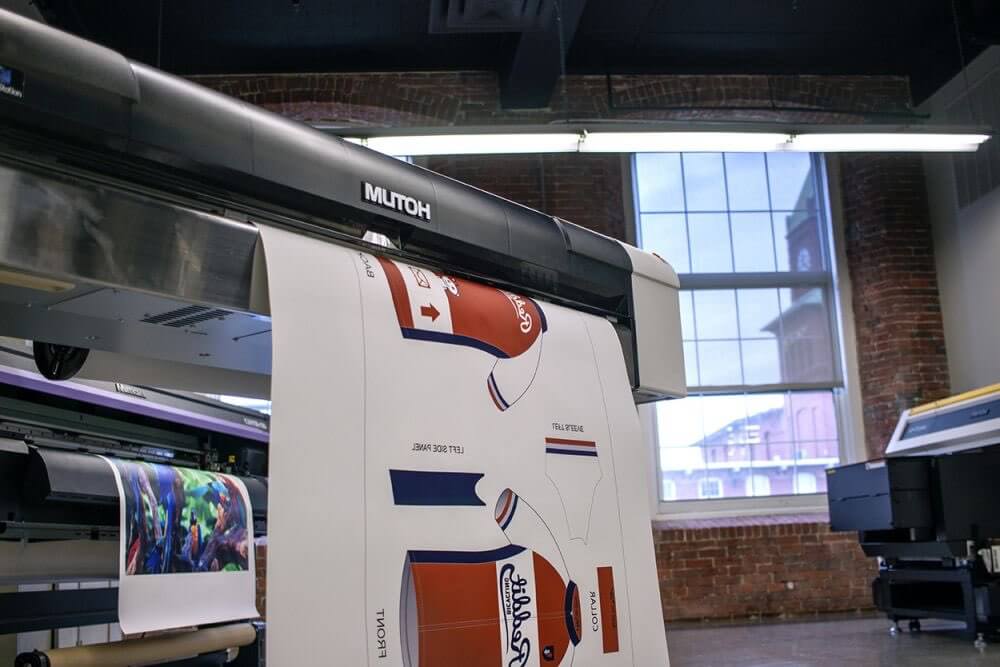WHAT DOES TEXTILE SUBLIMATION CONSIST OF?

Heat press, polyester, lots of colors, technique, and agility. The process that is followed to sublimate a garment has few steps, but it is important that you burn them in your mind, to be more aware of the minimum production time and what it means to print a garment.
First, we print the design with plotters on paper ready to sublimate that does not absorb the inks so that later it can be transferred to the fabric, this process is fast (depending on the machinery used, a large format printer can print from 254m2 per hour, so to print the paper necessary for a whole piece of fabric (100m) it would take half an hour).
With this technique, it is possible to capture colors directly in fabrics while maintaining their freshness, because it maintains the spaces that are in the fabrics of the garments, although as you already know, polyester is a fabric that does not usually perspire much (Although there are always alternatives with technical fabric, that's another world), so the printing method does not cover the surface, but the surface itself, already somewhat clogged, perspires less than cotton.

So, yes, it is a good technique, but not for everything, if you need something very specific for somewhat more demanding clients with sensations when putting on a garment, it may not be the best method, and you need to invest in screen printing and silk fabrics.
We transfer sublimation paper from the plotter to the calenders with the polyester-based fabric that we want to sublimate, we set the correct temperature so that the ink on the paper sublime (200ºC) and evaporates with the heat of the iron and penetrates the fabric. This process is the most important because if we do not pay attention, the fabric could burn, generate wrinkles or defects in the piece, difficult after correcting.
We remove the papers and roll the fabric, and it would be ready to deliver, later bagged to avoid any type of stain or noise in the fabric.
We have to bear in mind that certain polyester fabrics are not treated with antistatic, (it sounds like Chinese, right? It is a treatment that is used to discharge electricity from fabrics.


评论
发表评论